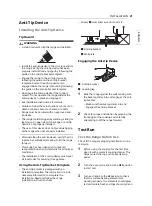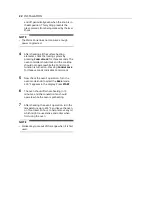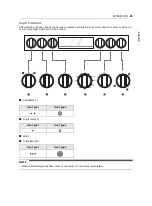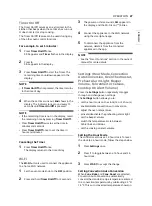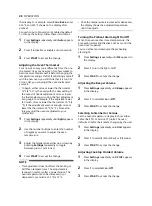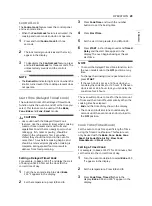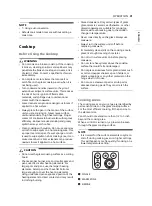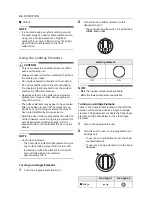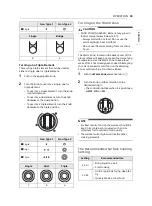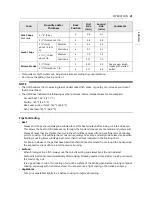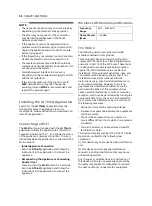
35
OPERATION
EN
G
LIS
H
temperature is reached. Not recommended for
use on ceramic cooktops.
•
Porcelain-enamel on metal
- Heating
characteristics will vary depending on base
material. Porcelain-enamel coating must be
smooth to avoid scratching ceramic cooktops.
•
Glass
- Slow heat conductor. Not recommended
for ceramic cooktop surfaces because it may
scratch the glass.
Home Canning Tips
Be sure that the canner is centered over the
surface element and is flat on the bottom.
• The base must not be more than 1 inch larger
than the element. Use of water bath canners
with rippled bottoms may extend the time
required to bring the water to a boil and may
damage the cooktop.
• Some canners are designed with smaller bases
for use on smooth surfaces.
• Use the high heat setting only until the water
comes to a boil or pressure is reached in the
canner.
• Reduce to the lowest heat setting that maintains
the boil, or pressure. If the heat is not turned
down, the cooktop may be damaged.
Oven
Before Using the Oven
NOTE
• Because the oven temperature cycles, an oven
thermometer placed in the oven cavity may not
show the same temperature that is set on the
oven.
• It is normal for the convection fan to run while
preheating during a regular bake cycle.
• The convection fan motor may run periodically
during a regular bake cycle.
• The heat turns off if the door is left open during
baking. If the door is left open for longer than 30
seconds during baking, the heat turns off. The
heat turns back on automatically once the door
is closed.
• Avoid opening the oven door more than
necessary during use. This helps the oven
maintain temperature, prevents unnecessary
heat loss, and saves on energy use.
Oven Vent
Areas near the vent may become hot during
operation and may cause burns. Do not block the
vent opening. Avoid placing plastics near the vent
as heat may distort or melt the plastic.
It is normal for steam to be visible when cooking
foods with high moisture content.
a
Oven Vent
b
Vent trim
CAUTION
• The edges of the range vent are sharp. Wear
gloves when cleaning the range to avoid injury.
Using Oven Racks
The racks have a turned-up back edge that
prevents them from being pulled out of the oven
cavity.
CAUTION
• Replace oven racks before turning the oven on
to prevent burns.
• Do not cover the racks with aluminum foil, or
any other material, or place anything on the
bottom of the oven. Doing so will result in poor
baking and may damage the oven bottom.
• Only arrange oven racks when the oven is cool.
Removing Racks
1
Pull the rack straight out until it stops.
2
Lift up the front of the rack and pull it out.
Replacing Racks
1
Place the end of the rack on the support.
2
Tilt the front end up and push the rack in.
UUGGwGZ\GG{ SGhGY[SGYWYXGGZaXYGwt
Содержание LSES6338
Страница 78: ...78 Memo U U GGw G _GG SGh GY SGYWYXGGZaXYGwt ...
Страница 79: ...79 Memo U U GGw G GG SGh GY SGYWYXGGZaXYGwt ...

